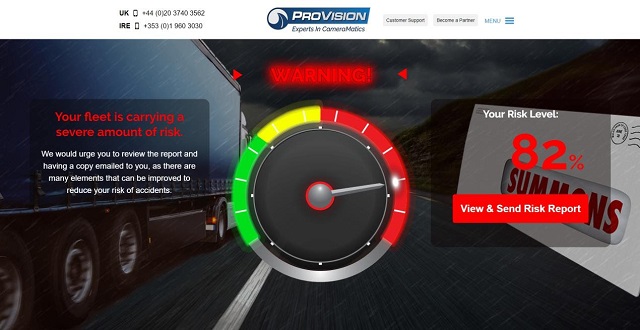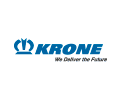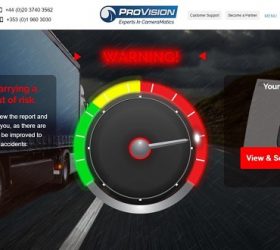Fleet operators have arguably more challenges in terms of legislative requirements than at any time in the past. Now, those reviewing and assessing their safety procedures and transport policy have a new tool to evaluate risk and compliance exposure. ProVision has launched its Fleet Risk Assessment Tool for commercial fleet operators, to provide insights on how to improve safety and reduce risk. The new Fleet Risk Assessment Tool is available now, free of charge, for transport managers and fleet operators and can be found here.
 ProVision is the market leader in CameraMatics solutions for commercial fleets, delivering products that allow fleet managers to improve work-related road safety, increase driver safety and comply with growing governance and compliance regulations.
ProVision is the market leader in CameraMatics solutions for commercial fleets, delivering products that allow fleet managers to improve work-related road safety, increase driver safety and comply with growing governance and compliance regulations.
The online portal takes users through a number of questions designed to evaluate the risk posed to and by their fleet. Once the questionnaire is complete, the user is given their risk rating and the option to download a report based on their results, which details the steps they can take to make their fleet safer.
“There are still a surprising number of fleet operators who are grossly unprepared and under-protected for incidents and accidents that may occur,” said Simon Murray, Sales Director of ProVision.“They either have no vehicle camera systems installed or have opted for low cost, standalone dashcams that are unfit for the demands and rigours of commercial fleet use and have no remote access capabilities. This leaves them exposed to insurance fraud, large claims, lawsuits and even prosecution.”
Mervyn O’Callaghan, Managing Director of ProVision, adds – “This tool really focuses on helping fleet operators understand the two key areas of exposure. The first is compliance and reporting; essentially being able to prove that your vehicles are roadworthy, your drivers are competent, and providing key video and tracking data if an incident occurs. The second is risk reduction, in the form of technologies that actively assist drivers to avoid accidents in the first place and protect the public and other road users.”
“We hope operators take on board the feedback from the survey, and use it to implement change. Sadly, too many companies come to us after they’ve been involved in an incident, rather than using the technology to stop accidents happening in the first place,” said Simon.


.gif?rand=6561)










